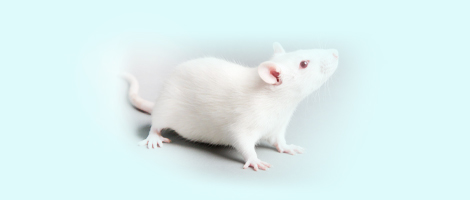













实验动物与比较医学 ›› 2025, Vol. 45 ›› Issue (4): 422-431.DOI: 10.12300/j.issn.1674-5817.2024.170
收稿日期:2024-11-13
修回日期:2025-02-04
出版日期:2025-08-25
发布日期:2025-09-01
通讯作者:
作者简介:赵鑫(1986—),女,博士,主管药师,研究方向:药效物质基础与临床药学研究。E-mail: zhaoxin1@tongji.edu.cn
基金资助:
ZHAO Xin, WANG Chenxi, SHI Wenqing, LOU Yuefen( )(
)( )
)
Received:2024-11-13
Revised:2025-02-04
Published:2025-08-25
Online:2025-09-01
Contact:
LOU Yuefen (ORCID: 0009-0005-9622-6059), E-mail: louyuefen@tongji.edu.cn摘要:
炎症性肠病(inflammatory bowel disease,IBD)是一类由遗传、免疫、环境等多因素共同驱动的慢性复发性肠道疾病,主要包括溃疡性结肠炎(ulcerative colitis)和克罗恩病(Crohn's disease)2种类型。当前的IBD疾病研究中,小鼠与斑马鱼是最常用的实验动物。其中,斑马鱼凭借其独特优势成为理想模型。相较于啮齿类动物,斑马鱼具有生长周期短、繁殖能力强、体型小巧及胚胎透明等特点,不仅便于动态追踪连续性病理变化,还能高效实现高通量药物筛选。斑马鱼的基因与人类同源性达70%以上,肠道细胞组成及发育过程与人类高度相似,且其肠道菌群与人类肠道微生态特征接近,为研究肠道菌群与IBD的关联奠定了良好基础。随着生物技术的发展,基于化学诱导和基因工程构建的斑马鱼IBD模型,可精准模拟人类IBD的核心病理特征,如肠壁增厚、炎性细胞浸润、促炎因子表达升高等,该模型在揭示发病机制和开发靶向药物中发挥了关键作用。本文首先阐述斑马鱼的肠道特征及IBD模型特点,进而从遗传、免疫、环境与饮食、感染等维度深入剖析其在IBD发病机制研究中的应用,同时综述其在抗炎药物、益生菌、中药等治疗药物开发中的研究进展,旨在为科研工作者在临床前研究的各阶段合理运用斑马鱼模型提供参考,以推动IBD基础研究领域的深入发展,并期望能加速该领域的突破。
中图分类号:
赵鑫,王晨曦,石文清,等. 斑马鱼在炎症性肠病机制及药物研究中的应用进展[J]. 实验动物与比较医学, 2025, 45(4): 422-431. DOI: 10.12300/j.issn.1674-5817.2024.170.
ZHAO Xin,WANG Chenxi,SHI Wenqing,et al. Advances in the Application of Zebrafish in the Research of Inflammatory Bowel Disease Mechanisms and Drug Development[J]. Laboratory Animal and Comparative Medicine, 2025, 45(4): 422-431. DOI: 10.12300/j.issn.1674-5817.2024.170.
比较维度 Comparison dimension | TNBS小鼠模型 TNBS mouse model | DSS小鼠模型 DSS mouse model | TNBS斑马鱼模型 TNBS zebrafish model | DSS斑马鱼模型 DSS zebrafish model |
|---|---|---|---|---|
造模方式 Modeling methods | 直肠内给药 | 饮用水添加 | 培养液中添加(幼鱼,受精后3~8 d)或直肠内给药(成年鱼,受精后≥90 d) | 培养液中添加(幼鱼,受精后3~8 d) |
疾病类型 Disease type | 克罗恩病 | 溃疡性结肠炎 | 克罗恩病 | 溃疡性结肠炎 |
肠道组织病理损伤 Intestinal histopathological damage | 肠壁全层炎症和溃疡,上皮细胞损伤,杯状细胞减少,隐窝破坏,可出现肠纤维化,见肠壁增厚,肉芽肿形成,浸润的炎性细胞以中性粒细胞为主 | 肠黏膜层炎症和溃疡,上皮细胞损伤,杯状细胞减少,隐窝破坏,浸润的炎性细胞以中性粒细胞为主 | 损伤不局限于肠道特定区域,可见中肠缩短、肠蠕动消失、肠道绒毛长度缩短、中性粒细胞浸润,杯状细胞变化不确定 | 中性粒细胞浸润,酸性黏液蛋白增多,肠壁增厚、肠黏膜结构破坏以及嗜酸性粒细胞浸润,杯状细胞减少 |
肠道微生物依赖 Intestinal microbiota dependence | 是 | 是 | 是 | 是 |
先天免疫 Innate immunity | 有 | 有 | 有 | 有 |
适应性免疫 Adaptive immunity | 有 | 有 | 无(幼鱼,受精后3~8 d), 有(成年鱼,受精后≥90 d) | 无 |
表1 化学诱导斑马鱼与小鼠结肠炎模型的比较
Table 1 Comparison of chemically induced colitis models in zebrafish and mice
比较维度 Comparison dimension | TNBS小鼠模型 TNBS mouse model | DSS小鼠模型 DSS mouse model | TNBS斑马鱼模型 TNBS zebrafish model | DSS斑马鱼模型 DSS zebrafish model |
|---|---|---|---|---|
造模方式 Modeling methods | 直肠内给药 | 饮用水添加 | 培养液中添加(幼鱼,受精后3~8 d)或直肠内给药(成年鱼,受精后≥90 d) | 培养液中添加(幼鱼,受精后3~8 d) |
疾病类型 Disease type | 克罗恩病 | 溃疡性结肠炎 | 克罗恩病 | 溃疡性结肠炎 |
肠道组织病理损伤 Intestinal histopathological damage | 肠壁全层炎症和溃疡,上皮细胞损伤,杯状细胞减少,隐窝破坏,可出现肠纤维化,见肠壁增厚,肉芽肿形成,浸润的炎性细胞以中性粒细胞为主 | 肠黏膜层炎症和溃疡,上皮细胞损伤,杯状细胞减少,隐窝破坏,浸润的炎性细胞以中性粒细胞为主 | 损伤不局限于肠道特定区域,可见中肠缩短、肠蠕动消失、肠道绒毛长度缩短、中性粒细胞浸润,杯状细胞变化不确定 | 中性粒细胞浸润,酸性黏液蛋白增多,肠壁增厚、肠黏膜结构破坏以及嗜酸性粒细胞浸润,杯状细胞减少 |
肠道微生物依赖 Intestinal microbiota dependence | 是 | 是 | 是 | 是 |
先天免疫 Innate immunity | 有 | 有 | 有 | 有 |
适应性免疫 Adaptive immunity | 有 | 有 | 无(幼鱼,受精后3~8 d), 有(成年鱼,受精后≥90 d) | 无 |
| [1] | ASHTON J J, BEATTIE R M. Inflammatory bowel disease: recent developments[J]. Arch Dis Child, 2024, 109(5):370-376. DOI:10.1136/archdischild-2023-325668 . |
| [2] | XU L, HE B J, SUN Y X, et al. Incidence of inflammatory bowel disease in urban China: a nationwide population-based study[J]. Clin Gastroenterol Hepatol, 2023, 21(13): 3379-3386.e29. DOI:10.1016/j.cgh.2023.08.013 . |
| [3] | SHAO B L, YANG W J, CAO Q. Landscape and predictions of inflammatory bowel disease in China: China will enter the Compounding Prevalence stage around 2030[J]. Front Public Health, 2022, 10:1032679. DOI:10.3389/fpubh.2022.1032679 . |
| [4] | KATSANDEGWAZA B, HORSNELL W, SMITH K. Inflammatory bowel disease: a review of pre-clinical murine models of human disease[J]. Int J Mol Sci, 2022, 23(16):9344. DOI:10.3390/ijms23169344 . |
| [5] | YANG H B, LUAN Y, LIU T T, et al. A map of cis-regulatory elements and 3D genome structures in zebrafish[J]. Nature, 2020, 588(7837): 337-343. DOI:10.1038/s41586-020-2962-9 . |
| [6] | 章琳俐, 姚一琳, 初晓红, 等. 斑马鱼肠黏膜屏障的结构与组成[J].实验动物与比较医学, 2013, 33(2):112-116. DOI: 10.3969/j.issn.1674-5817.2013.02.006 . |
| ZHANG L L, YAO Y L, CHU X H, et al. Structure and composition of intestinal mucosal barrier in zebrafish (Brachydanio rerio)[J]. Lab Anim Comp Med, 2013, 33(2):112-116. DOI: 10.3969/j.issn.1674-5817.2013.02.006 . | |
| [7] | XIA H, CHEN H M, CHENG X, et al. Zebrafish: an efficient vertebrate model for understanding role of gut microbiota[J]. Mol Med, 2022, 28(1):161. DOI:10.1186/s10020-022-00579-1 . |
| [8] | FERGUSON M, FOLEY E. Microbial recognition regulates intestinal epithelial growth in homeostasis and disease[J]. FEBS J, 2022, 289(13):3666-3691. DOI:10.1111/febs.15910 . |
| [9] | WILLMS R J, FOLEY E. Mechanisms of epithelial growth and development in the zebrafish intestine[J]. Biochem Soc Trans, 2023, 51(3):1213-1224. DOI:10.1042/BST20221375 . |
| [10] | SHAN Y, LEE M, CHANG E B. The gut microbiome and inflammatory bowel diseases[J]. Annu Rev Med, 2022, 73:455-468. DOI:10.1146/annurev-med-042320-021020 . |
| [11] | CORNUAULT J K, BYATT G, PAQUET M E, et al. Zebrafish: a big fish in the study of the gut microbiota[J]. Curr Opin Biotechnol, 2022, 73:308-313. DOI:10.1016/j.copbio.2021.09.007 . |
| [12] | ZHONG X T, LI J L, LU F R, et al. Application of zebrafish in the study of the gut microbiome[J]. Animal Model Exp Med, 2022, 5(4):323-336. DOI:10.1002/ame2.12227 . |
| [13] | OEHLERS S H, FLORES M V, HALL C J, et al. Chemically induced intestinal damage models in zebrafish larvae[J]. Zebrafish, 2013, 10(2):184-193. DOI:10.1089/zeb.2012.0824 . |
| [14] | BRUGMAN S, NIEUWENHUIS E E S. Oxazolone-induced intestinal inflammation in adult zebrafish[J]. Methods Mol Biol, 2017, 1559:311-318. DOI:10.1007/978-1-4939-6786-5_21 . |
| [15] | FLEMING A, JANKOWSKI J, GOLDSMITH P. In vivo analysis of gut function and disease changes in a zebrafish larvae model of inflammatory bowel disease: a feasibility study[J]. Inflamm Bowel Dis, 2010, 16(7):1162-1172. DOI:10.1002/ibd. 21200 . |
| [16] | OEHLERS S H, FLORES M V, OKUDA K S, et al. A chemical enterocolitis model in zebrafish larvae that is dependent on microbiota and responsive to pharmacological agents[J]. Dev Dyn, 2011, 240(1):288-298. DOI:10.1002/dvdy.22519 . |
| [17] | OEHLERS S H, FLORES M V, HALL C J, et al. Retinoic acid suppresses intestinal mucus production and exacerbates experimental enterocolitis[J]. Dis Model Mech, 2012, 5(4):457-467. DOI:10.1242/dmm.009365 . |
| [18] | ZHAO S Y, XIA J H, WU X H, et al. Deficiency in class Ⅲ PI3-kinase confers postnatal lethality with IBD-like features in zebrafish[J]. Nat Commun, 2018, 9(1):2639. DOI:10.1038/s41467-018-05105-8 . |
| [19] | ZHAO Q, CHANG H, ZHENG J, et al. A novel Trmt5-deficient zebrafish model with spontaneous inflammatory bowel disease-like phenotype[J]. Signal Transduct Target Ther, 2023, 8(1): 86. DOI:10.1038/s41392-023-01318-6 . |
| [20] | PARK S C, JEEN Y T. Genetic studies of inflammatory bowel disease-focusing on Asian patients[J]. Cells, 2019, 8(5):404. DOI:10.3390/cells8050404 . |
| [21] | OEHLERS S H, FLORES M V, HALL C J, et al. The inflammatory bowel disease (IBD) susceptibility genes NOD1 and NOD2 have conserved anti-bacterial roles in zebrafish[J]. Dis Model Mech, 2011, 4(6):832-841. DOI:10.1242/dmm.006122 . |
| [22] | SIFUENTES-DOMINGUEZ L F, LI H Y, LLANO E, et al. SCGN deficiency results in colitis susceptibility[J]. eLife, 2019, 8: e49910. DOI:10.7554/eLife.49910 . |
| [23] | KAYA B, DOÑAS C, WUGGENIG P, et al. Lysophosphatidic acid-mediated GPR35 signaling in CX3CR1+ macrophages regulates intestinal homeostasis[J]. Cell Rep, 2020, 32(5):107979. DOI:10.1016/j.celrep.2020.107979 . |
| [24] | LAI C Y, YEH K Y, LIU B F, et al. microRNA-21 plays multiple oncometabolic roles in colitis-associated carcinoma and colorectal cancer via the PI3K/AKT, STAT3, and PDCD4/TNF-α signaling pathways in zebrafish[J]. Cancers, 2021, 13(21):5565. DOI:10.3390/cancers13215565 . |
| [25] | MARJORAM L, ALVERS A, ELIZABETH DEERHAKE M, et al. Epigenetic control of intestinal barrier function and inflammation in zebrafish[J]. Proc Natl Acad Sci USA, 2015, 112(9):2770-2775. DOI:10.1073/pnas.1424089112 . |
| [26] | BRUGMAN S, LIU K Y, LINDENBERGH-KORTLEVE D, et al. Oxazolone-induced enterocolitis in zebrafish depends on the composition of the intestinal microbiota[J]. Gastroenterology, 2009, 137(5):1757-1767.e1. DOI:10.1053/j.gastro.2009.07.069 . |
| [27] | KANTHER M, SUN X L, MÜHLBAUER M, et al. Microbial colonization induces dynamic temporal and spatial patterns of NF-κB activation in the zebrafish digestive tract[J]. Gastroenterology, 2011, 141(1):197-207. DOI:10.1053/j.gastro. 2011.03.042 . |
| [28] | THAKUR P C, DAVISON J M, STUCKENHOLZ C, et al. Dysregulated phosphatidylinositol signaling promotes endoplasmic-reticulum-stress-mediated intestinal mucosal injury and inflammation in zebrafish[J]. Dis Model Mech, 2014, 7(1):93-106. DOI:10.1242/dmm.012864 . |
| [29] | VAN DER VAART M, VAN SOEST J J, SPAINK H P, et al. Functional analysis of a zebrafish myd88 mutant identifies key transcriptional components of the innate immune system[J]. Dis Model Mech, 2013, 6(3):841-854. DOI:10.1242/dmm.010843 . |
| [30] | SANMARCO L M, CHAO C C, WANG Y C, et al. Identification of environmental factors that promote intestinal inflammation[J]. Nature, 2022, 611(7937):801-809. DOI:10.1038/s41586-022-05308-6 . |
| [31] | DIAZ O E, SORINI C, MORALES R A, et al. Perfluoro-octanesulfonic acid modulates barrier function and systemic T-cell homeostasis during intestinal inflammation[J]. Dis Model Mech, 2021, 14(12): dmm049104. DOI:10.1242/dmm. 049104 . |
| [32] | XIAO W, HU C Y, NI Y F, et al. 27-Hydroxycholesterol activates the GSK-3β/β-catenin signaling pathway resulting in intes-tinal fibrosis by inducing oxidative stress: effect of dietary interventions[J]. Inflamm Res, 2024, 73(2):289-304. DOI:10.1007/s00011-023-01835-8 . |
| [33] | FLORES E, DUTTA S, BOSSERMAN R, et al. Colonization of larval zebrafish (Danio rerio) with adherent-invasive Escherichia coli prevents recovery of the intestinal mucosa from drug-induced enterocolitis[J]. mSphere, 2023, 8(6): e0051223. DOI:10.1128/msphere.00512-23 . |
| [34] | RAMANAN D, BOWCUTT R, LEE S C, et al. Helminth infection promotes colonization resistance via type 2 immunity[J]. Science, 2016, 352(6285):608-612. DOI:10.1126/science.aaf3229 . |
| [35] | HAARDER S, KANIA P W, HOLM T L, et al. Effect of ES products from Anisakis (Nematoda: Anisakidae) on experimentally induced colitis in adult zebrafish[J]. Parasite Immunol, 2017, 39(10):e12456. DOI:10.1111/pim.12456 . |
| [36] | REN X X, LIU Q Y, ZHOU P R, et al. DHX9 maintains epithelial homeostasis by restraining R-loop-mediated genomic instability in intestinal stem cells[J]. Nat Commun, 2024, 15(1):3080. DOI:10.1038/s41467-024-47235-2 . |
| [37] | HABJAN E, SCHOUTEN G K, SPEER A, et al. Diving into drug-screening: zebrafish embryos as an in vivo platform for antimicrobial drug discovery and assessment[J]. FEMS Microbiol Rev, 2024, 48(3): fuae011. DOI:10.1093/femsre/fuae011 . |
| [38] | SILVA N V, CARREGOSA D, GONÇALVES C, et al. A dietary cholesterol-based intestinal inflammation assay for improving drug-discovery on inflammatory bowel diseases[J]. Front Cell Dev Biol, 2021, 9:674749. DOI:10.3389/fcell.2021. 674749 . |
| [39] | SHENG Y, LI H L, LIU M J, et al. A manganese-superoxide dismutase from Thermus thermophilus HB27 suppresses inflammatory responses and alleviates experimentally induced colitis[J]. Inflamm Bowel Dis, 2019, 25(10):1644-1655. DOI:10.1093/ibd/izz097 . |
| [40] | MOUSAVI T, HASSANI S, BAEERI M, et al. Comparison of the safety and efficacy of fingolimod and tofacitinib in the zebrafish model of colitis[J]. Food Chem Toxicol, 2022, 170:113509. DOI:10.1016/j.fct.2022.113509 . |
| [41] | JEFREMOW A, NEURATH M F. Novel small molecules in IBD: current state and future perspectives[J]. Cells, 2023, 12(13):1730. DOI:10.3390/cells12131730 . |
| [42] | HUANG X D, AI F, JI C, et al. A rapid screening method of candidate probiotics for inflammatory bowel diseases and the anti-inflammatory effect of the selected strain Bacillus smithii XY1[J]. Front Microbiol, 2021, 12:760385. DOI:10.3389/fmicb.2021.760385 . |
| [43] | NAG D, FARR D, RAYCHAUDHURI S, et al. An adult zebrafish model for adherent-invasive Escherichia coli indicates protection from AIEC infection by probiotic E. coli Nissle[J]. iScience, 2022, 25(7):104572. DOI:10.1016/j.isci.2022.104572 . |
| [44] | CHEN H J, LEI P Y, JI H, et al. Escherichia coli Nissle 1917 ghosts alleviate inflammatory bowel disease in zebrafish[J]. Life Sci, 2023, 329:121956. DOI:10.1016/j.lfs.2023.121956 . |
| [45] | CHEN M, LIU C, DAI M Z, et al. Bifidobacterium lactis BL-99 modulates intestinal inflammation and functions in zebrafish models[J]. PLoS One, 2022, 17(2): e0262942. DOI:10.1371/journal.pone.0262942 . |
| [46] | YU Y R, CHEN J, ZHANG X H, et al. Identification of anti-inflammatory compounds from Zhongjing formulae by knowledge mining and high-content screening in a zebrafish model of inflammatory bowel diseases[J]. Chin Med, 2021, 16(1):42. DOI:10.1186/s13020-021-00452-z . |
| [47] | JIA D S, TIAN X, CHEN Y T, et al. Preparation of enzymatic hydrolysates of mulberry leaf flavonoids and investigation into its treatment and mechanism for zebrafish inflammatory bowel disease[J]. Fish Shellfish Immunol, 2024, 154:109960. DOI:10.1016/j.fsi.2024.109960 . |
| [48] | LI Y, LIU X J, SU S L, et al. Evaluation of anti-inflammatory and antioxidant effectsof Chrysanthemum stem and leaf extract on zebrafish inflammatory bowel disease model[J]. Molecules, 2022, 27(7):2114. DOI:10.3390/molecules27072114 . |
| [1] | 刘亚益, 贾云凤, 左一鸣, 张军平, 吕仕超. 心气阴两虚证动物模型的构建方法与评价进展[J]. 实验动物与比较医学, 2025, 45(4): 411-421. |
| [2] | 李会萍, 高洪彬, 温金银, 杨锦淳. 疾病动物模型数字化图谱数据库平台的构建与初步应用[J]. 实验动物与比较医学, 2025, 45(3): 300-308. |
| [3] | 潘颐聪, 蒋汶洪, 胡明, 覃晓. 慢性肾脏病大鼠主动脉钙化模型的术式优化及效果评价[J]. 实验动物与比较医学, 2025, 45(3): 279-289. |
| [4] | 陈钰涵, 陈瑾玲, 李欣, 区燕华, 王斯, 陈镜伊, 王兴易, 袁嘉丽, 段媛媛, 羊忠山, 牛海涛. 基于中西医临床病证特点的重症肌无力动物模型分析[J]. 实验动物与比较医学, 2025, 45(2): 176-186. |
| [5] | 连辉, 姜艳玲, 刘佳, 张玉立, 谢伟, 薛晓鸥, 李健. 异常子宫出血大鼠模型的构建与评价[J]. 实验动物与比较医学, 2025, 45(2): 130-146. |
| [6] | 罗世雄, 张赛, 陈慧. 常见哮喘动物模型的建立方法与评价研究进展[J]. 实验动物与比较医学, 2025, 45(2): 167-175. |
| [7] | 王碧莹, 鲁家铄, 昝桂影, 陈若松, 柴景蕊, 刘景根, 王瑜珺. 啮齿类动物药物成瘾模型的构建方法和应用进展[J]. 实验动物与比较医学, 2025, 45(2): 158-166. |
| [8] | 费彬, 郭文科, 郭建平. 疝疾病动物模型研究及新型疝修补材料应用进展[J]. 实验动物与比较医学, 2025, 45(1): 55-66. |
| [9] | 杨家豪, 丁纯蕾, 钱风华, 孙旗, 姜旭升, 陈雯, 沈梦雯. 脓毒症相关脏器损伤动物模型研究进展[J]. 实验动物与比较医学, 2024, 44(6): 636-644. |
| [10] | 孙效容, 苏丹, 贵文娟, 陈玥. 手术诱导大鼠中重度膝骨关节炎模型的建立与评价[J]. 实验动物与比较医学, 2024, 44(6): 597-604. |
| [11] | 田芳, 潘滨, 史佳怡, 徐燕意, 李卫华. 大气细颗粒物PM2.5暴露动物模型建立方法及在生殖毒性研究中的应用进展[J]. 实验动物与比较医学, 2024, 44(6): 626-635. |
| [12] | 赵小娜, 王鹏, 叶茂青, 曲新凯. 应用Triacsin C构建新型高血糖肥胖小鼠心功能减退模型[J]. 实验动物与比较医学, 2024, 44(6): 605-612. |
| [13] | 涂颖欣, 纪依澜, 王菲, 杨东明, 王冬冬, 孙芷馨, 戴悦欣, 王言吉, 阚广捍, 吴斌, 赵德明, 杨利峰. 小型猪后肢去负荷模拟失重模型的建立与组织损伤研究[J]. 实验动物与比较医学, 2024, 44(5): 475-486. |
| [14] | 黄冬妍, 吴建辉. 生殖毒理学研究动物模型的建立方法及应用评价[J]. 实验动物与比较医学, 2024, 44(5): 550-559. |
| [15] | 郑艺清, 邓亚胜, 范燕萍, 梁天薇, 黄慧, 刘永辉, 倪召兵, 林江. 基于数据挖掘的盆腔炎性疾病动物模型应用分析[J]. 实验动物与比较医学, 2024, 44(4): 405-418. |
| 阅读次数 | ||||||
|
全文 |
|
|||||
|
摘要 |
|
|||||